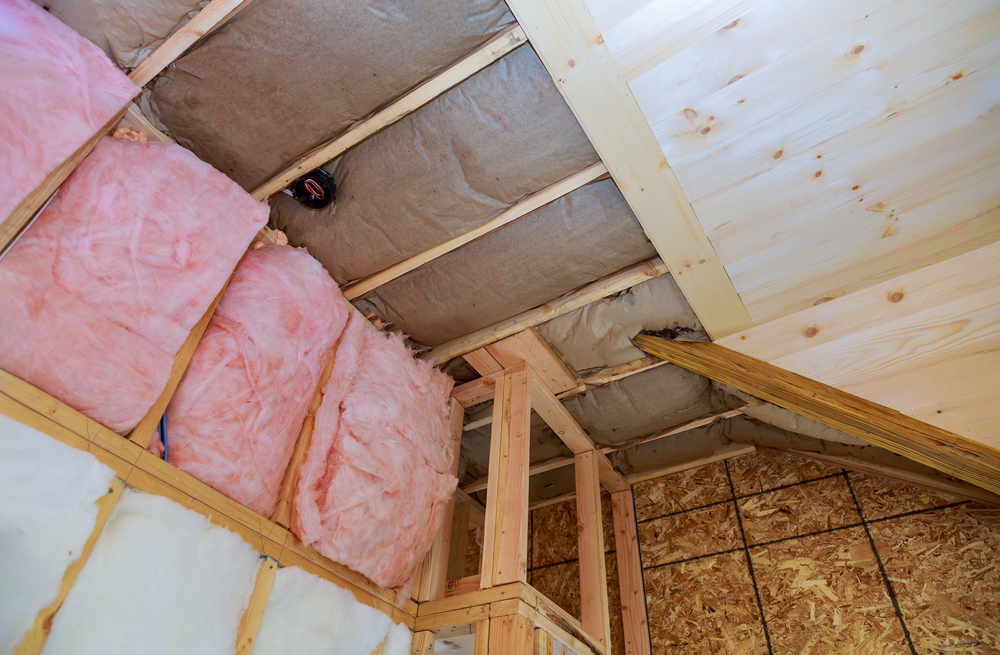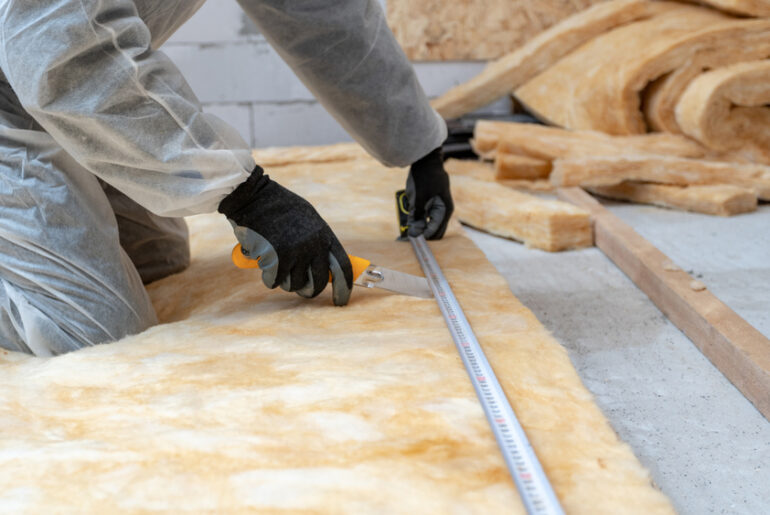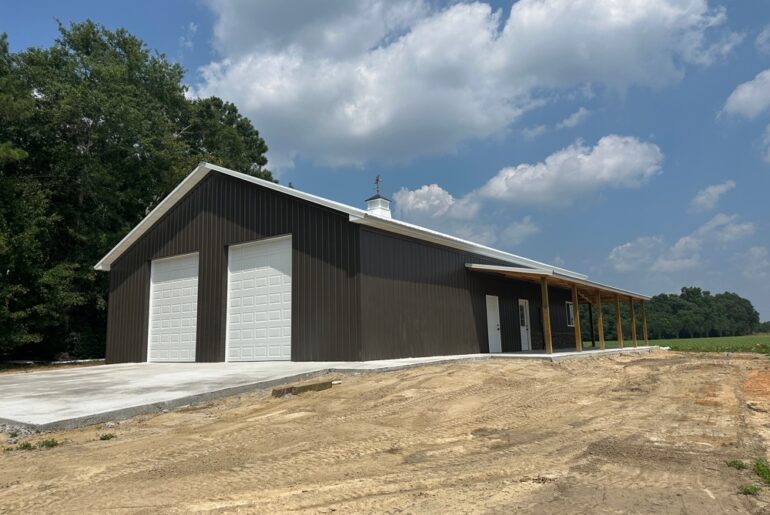A major concern most homeowners have is when their fiberglass insulation gets wet, as it can pose a serious problem, especially when there’s a heavy rainstorm or water leaks due to burst pipes or a leaky roof.
Fiberglass insulation doesn’t absorb water, as it’s made from glass fibers. However, it can get wet and retain water, especially when exposed to water for prolonged periods. Wet fiberglass insulation can lose its thermal efficiency and R-value temporarily.
Wet fiberglass insulation is a serious concern and should be treated immediately. So, how does fiberglass insulation get wet and hold water? And what happens when the fiberglass insulation gets wet?
This article covers whether fiberglass can get wet, whether moisture causes harm to fiberglass insulation, and what to do if your insulation got wet.
Does Fiberglass Insulation Absorb Water?
Fiberglass insulation doesn’t absorb water, as it’s made from spun reinforced glass fibers. However, it can get wet and hold water, especially when dowsed or exposed to water sources for long periods.
Aside from water, fiberglass insulation can also retain moisture, especially when there is an excessive buildup. If there are leaks or burst pipes in the area where fiberglass was installed, it could result in condensation or when the vapor in the air is changed into liquid water. This can significantly contribute to the wetness of fiberglass insulation.
So how does the fiberglass insulation hold water and get wet?
This happens when the water molecules penetrate the pores or air spaces between the spun tiny glass fibers, filling them with water. These water molecules then replace the air inside the pores and hold the water within, resulting in the fiberglass insulation getting wet.
What Happens To a Fiberglass Insulation When it Gets Wet?
When fiberglass insulation gets wet, you would first notice its change in appearance. The fiberglass will become soggy as the retained water from the pores or air pockets will make the material heavy. The retained water will also reduce the fiberglass insulation’s thickness because it can’t support the retained water’s weight. This results in the loss of fiberglass insulation’s R-value as insulation thickness and density determine the R-value.
Wet fiberglass insulation also loses its thermal efficiency temporarily as long as it’s wet. As mentioned above, the water molecules will replace the air inside the pores of the glass fibers, which is the core of the insulating ability of fiberglass.
Instead of repelling the heat, the water would conduct it since it’s a good heat conductor and 20 times better than air. As a result, the fiberglass insulation would lose its ability to restrict the heat transfer, hence losing R-value. It also results in less energy efficiency, heat loss, and higher energy bills.
Nevertheless, its thermal properties will come back once it’s dry. However, the fiberglass insulation will be compacted and will not recover to its actual thickness when exposed to water for a prolonged period and unable to dry in time. It would permanently lose its thermal performance, efficiency, and integrity when this happens.
In addition, when the wet fiberglass insulation is left unattended, it would result in mold and bacteria build-up as dust particles, smores, and other microscopic particles can be trapped in the insulation. If there’s excessive moisture present, this would also likely speed up mold growth and amplify the rotting process.
It could also result in structural damage as the decay caused by mold can spread to the wallboard, ceiling, drywall, framing materials, and surrounding infrastructure. Exposure to mold and bacteria build-up could also be detrimental to a person’s health as it’s dangerous and toxic substances. It can cause coughing, itching, difficulty breathing, and even aggravate severe allergic reactions.
So how do you know if your fiberglass insulation is wet?
If your fiberglass insulation is wet for prolonged periods, you might notice dark spots forming on the area where it’s installed, which indicates mold growth. You might also notice wet areas that give off a pungent smell.
Other signs to look out for when you have wet fiberglass insulation are brown staining on walls, peeling or bubbling on the wallpaper, or dips in the floor, walls, or ceilings.
Do You Need To Replace a Wet Fiberglass Insulation?
Replacement is essential if your fiberglass insulation is drenched or shows signs of mold growth that could lead to rotting and structural damage. In addition, if you find any source of water leaks where your insulation was installed, it’s best to immediately replace or remove the fiberglass to control the growth and spread of mold.
Another sign wet fiberglass insulation needs replacing is when it becomes contaminated or compressed, as glass fibers create clumps and become cemented together when soaked with contaminated water in the affected areas. As a result, the fiberglass will lose its effectiveness permanently and need replacement. Again, replacing may seem inconvenient, but it would reduce the risk of further damage and health risks.
However, wet fiberglass insulation can still be reused if you save and dry it just in time to regain its original performance level and thermal value. It all depends on how long it was exposed to water. When it’s properly dried, kept its original thickness, and has no musty or mildewy smell, then it’s good to reuse it.
How To Fix A Wet Fiberglass Insulation
The good news is that the fiberglass insulation can regain its thermal effectiveness after it dries up. To fix wet fiberglass insulation, use some fans and a dehumidifier, running it to help dry the affected area, especially if it’s located in an attic or crawl space.
If needed, remove the wet fiberglass insulation and keep them in a dry and warm place to dry them out. Once you have dried the insulation, check it over the next several weeks for any sign of mold growth. If you notice a musty smell, the fiberglass insulation is undoubtedly contaminated and needs to be discarded.
Remember that the timeframe of drying fiberglass insulation must be within 48 hours to control mold growth and prevent contamination. Wearing protective clothing, such as goggles, a mask, and long sleeves, is important to avoid inhaling or contacting fiberglass fibers.
Moreover, although you can fix the wet fiberglass insulation yourself, it’s best to contact a trusted insulation professional to handle it to get the job done properly and safely.
Can You Dry a Wet Fiberglass Insulation?
Yes. You can dry wet fiberglass insulation by yourself. As mentioned above, you can run a dehumidifier and fans on the affected area or remove the insulation and keep it in a warm and dry place until it dries out.
One way of preventing wet fiberglass insulation is to seal and caulk any gaps that might allow water infiltration in the house’s exterior, especially during heavy rainfall. It’s also important to find any leaks and start repairing the source of water leaks, such as broken pipes or damaged roofs.





